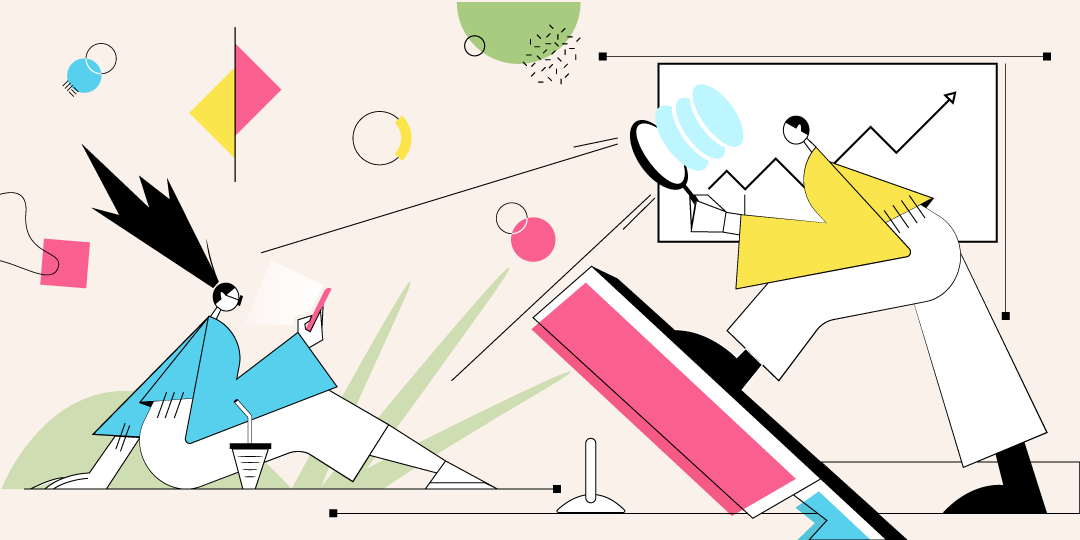Designing a digital product is one of the most important stages of launching a startup. Often discussions in the early stages of development lead to the discovery of new options and features, and often lead to pivots altogether. It is during the product design process that a clear vision emerges, features are prioritized, a roadmap is created, a set of technology stacks, cost and MVP milestones are determined.
Everything in IT is rapidly evolving, including the very approaches to design for startups: new visualization and prototyping tools come out, certain methodologies come to the fore, new technologies and services are born. Below is a brief guide to help a startup go through all the stages of designing a digital product with confidence.

Stage 1: Stakeholders
At the very beginning it is necessary to outline the circle of people who have decision-making power, as well as to appoint a product champion – a person who will be responsible for making the final decisions in case of disagreements among team members. Preferably, each member of the working group should be responsible for one area: user experience, product logistics, and finance. In my experience up to 4 stakeholders are enough for a startup.
Stage 2: Formation and testing of value proposition hypotheses
Having determined the stakeholders, we start to research the market with the existing products in the given category and identify users’ expectations.
We take the market research data into account in the formation of the value proposition and in the design of the user experience, which covers all the touches with the product and is not limited to the mobile application. For example, if the value proposition is based on express delivery, we prescribe every step of the logistics and capture the requirements that will serve the user experience.
The process looks like this: we conduct a joint workshop to describe the main hypotheses and needs of the stakeholders, then we conduct interviews for a detailed study of the goals and objectives. This step usually takes 8-10 days.
Step 3: Choosing a business model and calculating the unit economy
Next, we calculate the business model. You have to work out a monetization model and calculate how much money each paying customer should bring, make preliminary projections of the minimal number of users you have to attract in order to make the economy converge.
Next we estimate the possible channels for attracting traffic and calculate the cost of one attracted user. Here it is important to calculate the time in which the startup can gain the minimum required number of users and estimate the cost of technical support.
It may happen that the market the startup was originally aimed at is not capacious enough in terms of paying users – in this case it is worth considering options for pivoting to other markets or adjusting the value proposition itself.
Such calculations will allow the startup to begin creating a digital product.

Step 4: Backlog, breakdown into sprints, technology stack formation, and team composition
Identify the touchpoints between the user and the digital product, as well as the people on the business side who will be responsible for the entire user experience.
Often these touchpoints include:
- A mobile app and website for the user,
- a control panel and a support chat for the administrator.
Based on this, the requirements for each component of the system are formed, since they will be developed independently of each other. In order to determine the composition of the work, a technical team is connected, at least one specialist per direction. The startup needs to choose a technology stack, on which it will be possible to implement the functional tasks.
Next, we form a backlog and combine the tasks into sprints. Then we optimize the functions and transfer some of the first sprints to the backlog for the fast launch of MVP.
Usually this stage takes from 5 to 10 days, depending on the volume of the planned development.
Stage 5: UX-prototype, rendering the main scenarios
Let’s move on to the visual part. The goal is to create a structure that will be user-friendly and will take into account the plans for future product development.
First, we design the map of screens and the map of states and actions, followed by the rendering of scenarios at the level of wierframes.
At this stage we design the logic – without a detailed drawing of the UI, select the main scenarios, and based on all these steps we develop the UX of the application. When designing the user experience, consider stable patterns of user behavior in similar applications.

Step 6: Fix the plan and submit to development
During the creation of the product in the outside world, interesting events, events, and conferences take place for the startup, which should be taken into account when drafting the roadmap. Product development can take several months, and the startup should be able to talk about and even showcase its product and, if possible, use actual infographics to promote it. Such a development timeline is fixed in a trillo or wrike – it’s called a basic plan.
Realizing how much the time to bring the product to market means, at the first opportunity we start parallel development processes:
- Drawing the UI in detail and creating a clickable prototype. Figma is most often used for this purpose – it will be comfortable for both designers and developers. It is important to think about unpopular cases in UX – if you do not do this, you may encounter them later, and it will lead to a loss of time.
- Developing the back-end. We start with developing API documentation, after which we start writing code.
- Mobile development. Fully starts after a clickable prototype is agreed upon. By experience, it’s important for the startup team to start the first phases of development while the design is being agreed upon.
